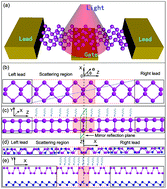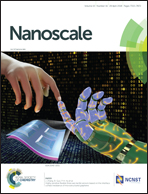Self-powered photogalvanic phosphorene photodetectors with high polarization sensitivity and suppressed dark current
Abstract
High polarization sensitivity, suppressed dark current and low energy consumption are all desirable device properties for photodetectors. In this work, we propose phosphorene-based photodetectors that are driven using photogalvanic effects (PGEs). The inversion symmetry of pristine phosphorene is broken using either application of an out-of-plane gate voltage or a heterostructure that is composed of the original phosphorene and blue phosphorene. The potential asymmetry enables PGEs under illumination by polarized light. Quantum transport calculations show that robust photocurrents are indeed generated by PGEs under a zero external bias voltage because of the broken inversion symmetry. These results indicate that the proposed photodetector is self-powered. In addition, the zero bias voltage eliminates the dark currents that are caused by application of an external bias voltage to traditional photodetectors. High polarization sensitivity to both linearly and circularly polarized light can also be realized, with extinction ratios ranging up to 102. The photoresponse of the proposed phosphorene/blue phosphorene heterostructure can be greatly enhanced by gating and is several orders of magnitude higher than that in gated phosphorene.



 Please wait while we load your content...
Please wait while we load your content...